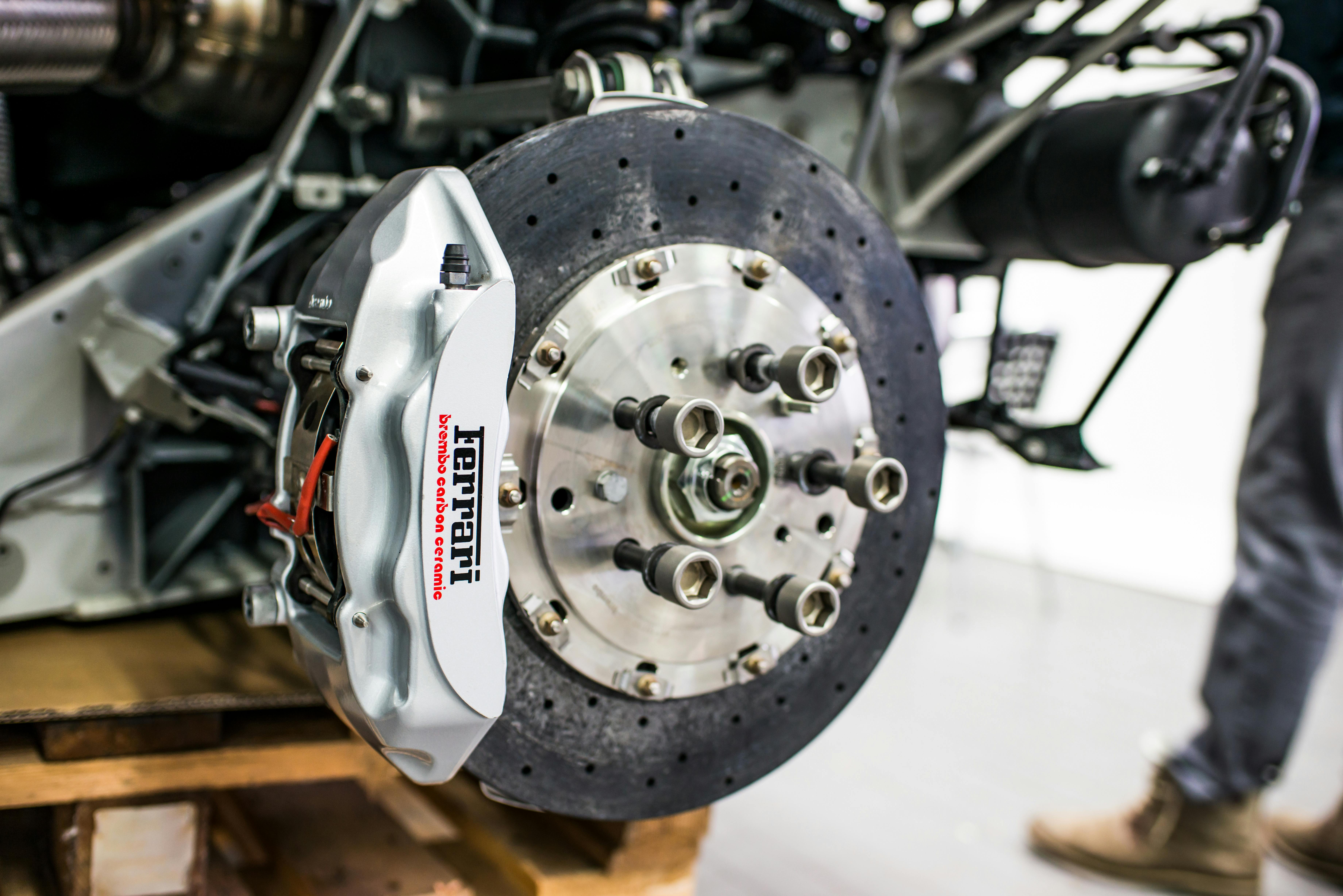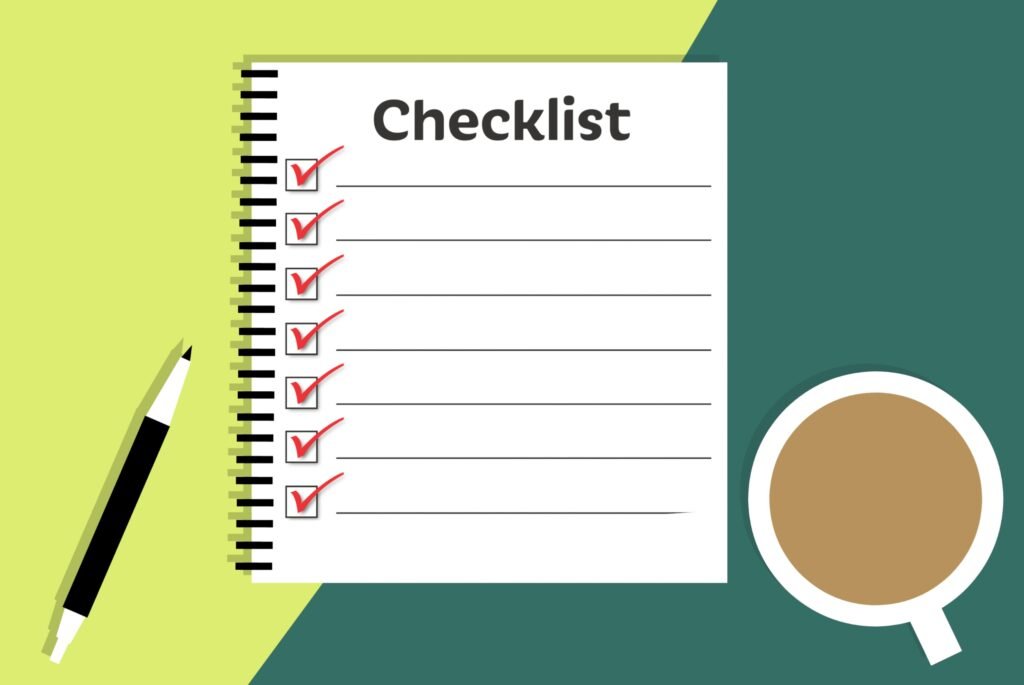Introduction: The Importance of Preparation

Preparing your car for a long road trip is a crucial component that significantly impacts both safety and comfort during your journey. Long road trips can be exciting, but they can also present numerous challenges if proper preparation is overlooked. An inadequately maintained vehicle may face mechanical failures, tire blowouts, or other incidents that can lead to substantial inconveniences. These situations not only increase stress levels but can also result in costly roadside emergencies that could have been easily prevented through proactive measures.
Common issues that can arise during road trips often stem from a lack of foresight in vehicle maintenance. For instance, neglecting regular oil changes, ignoring warning lights, or failing to maintain proper tire pressure can result in a host of problems on the road. Each of these car maintenance oversights has the potential to diminish the performance of your vehicle and impair your safety. Therefore, understanding how to get your car ready for a road trip involves comprehensive preparation, which includes checking fluid levels, battery health, and tire conditions.
Moreover, preparing your car for a road trip is not solely about avoiding mechanical failures. Comfort is also a critical element of any long road trip car preparation. Ensuring that your vehicle is clean and well-organized can enhance the overall travel experience, making it more enjoyable for all passengers. A well-planned car checklist for long trips can help ensure that everything from entertainment to snacks is accounted for, alleviating potential stressors during the drive.
In summary, the importance of adequately preparing your car for a long journey cannot be overstated. By prioritizing vehicle maintenance and creating a comprehensive checklist, you equip yourself with the resources necessary to enjoy a safe and comfortable trip, free from the disruptions that often accompany unpreparedness.
Checking Your Vehicle’s Fluids

Before embarking on a long road trip, it is crucial to prepare your car for the journey ahead. A key aspect of this preparation involves checking your vehicle’s fluids, which play an essential role in ensuring optimal performance and safety while driving. There are several fluids you should inspect, including engine oil, coolant, brake fluid, transmission fluid, and windshield washer fluid.
To begin, checking the engine oil is vital. First, park your vehicle on level ground and turn off the engine. After allowing it to cool for a few minutes, locate the dipstick, remove it, wipe it clean, and reinsert it to check the oil level. If the oil level is below the recommended marks, top it off with the appropriate oil type as specified in your owner’s manual. Look for any signs of a milky appearance or burnt smell, which could indicate a more significant issue.
Next, inspect the coolant level in the reservoir. Ensure the engine is cool, and check if the coolant reaches the appropriate fill line. If it’s low, mix the recommended coolant with distilled water and add it. Pay attention to the color of the fluid, as a brown hue might suggest a need for a flush.
Brake fluid should also be checked to prevent any potential braking issues. Open the brake fluid reservoir, and if the fluid is below the minimum mark, add the recommended fluid from your vehicle’s manual. Finally, for transmission fluid, use the dipstick method similar to checking oil—ensure the car is running and at the correct temperature, then look for signs of sufficient fluid levels and cleanliness.
Windshield washer fluid is often overlooked, but essential for maintaining visibility during your trip. Make sure to fill the reservoir with a suitable mixture if necessary. By performing these checks and topping up your vehicle’s fluids, you can effectively prepare your car for a road trip, contributing significantly to your road trip car maintenance and overall safety.
Inspecting Tire Health

One of the most critical aspects of how to get your car ready for a road trip involves ensuring tire health. Proper tire maintenance not only enhances safety but also impacts fuel efficiency during your travels. Before embarking on a long road trip, it is essential to check the tire pressure, tread depth, and for any signs of visible damage. These steps are vital components of a comprehensive car checklist for long trips.
To begin, checking the tire pressure is crucial. Use a reliable tire pressure gauge to measure the air pressure of all four tires, including the spare. Refer to the vehicle’s owner manual or the sticker located on the driver’s door jamb for the recommended tire pressure. Maintaining proper pressure is essential because under-inflated tires can lead to excessive wear and increase the risk of a blowout, particularly on long road trips.
Next, assess the tire tread depth. The tread provides the necessary grip for vehicles, particularly in adverse weather conditions. A simple way to check this is by using a penny: insert a penny into the tread with Lincoln’s head facing downward. If you can see the top of Lincoln’s head, it is time to replace your tires. Additionally, inspect the tires for any visible damage such as cracks, bulges, or foreign objects embedded in them, as these can significantly compromise performance.
Moreover, if the tires show uneven wear or if they have been used for a certain number of miles, it may be prudent to consider rotating or replacing them altogether. Proper maintenance of your tires will not only ensure a safer road trip but also extend their lifespan. Along the journey, monitor tire pressure regularly, as temperature changes can affect it. By taking these preventative measures, you will be well-equipped to enjoy a smooth and safe long road trip.
Brakes: Safety First

When planning to prepare your car for a road trip, it is paramount to prioritize the braking system. The brakes are one of the most crucial components of vehicle safety, particularly during long trips where road conditions can vary significantly. Thus, performing a thorough inspection of the braking system before embarking on your journey is essential.
Start by examining the brake pads and discs. Brake pads should have adequate thickness; if they appear worn down to less than a quarter of an inch, they likely need replacement. Additionally, inspect the brake discs for grooves or scoring. Any uneven surface can lead to reduced braking efficiency, which can be particularly dangerous during a long road trip when effective stopping power is vital.
Next, check the brake fluid level in the reservoir. Low brake fluid can indicate a leak in the system. If the fluid appears cloudy, it may require flushing and replacement. Maintaining proper fluid levels ensures that the braking system functions effectively and can significantly enhance road trip safety.
Pay attention to signs of brake wear during your inspection. Common indicators include a squeaking noise when brakes are applied, a spongy feeling in the brake pedal, or the car pulling to one side when stopping. If you notice any of these issues, it is crucial to address them before hitting the road.
In general, if you are uncertain about the condition of your brakes or if any issues arise during your inspection, seek assistance from a professional mechanic. Having functional brakes is not just a recommendation but a necessity for any road trip. By ensuring that your brakes are in optimal condition, you can drive with confidence, knowing that you have taken the necessary steps for your safety on long road trips.
Battery Maintenance

One of the most crucial aspects when you prepare your car for a road trip is ensuring that the battery is in good working condition. A malfunctioning battery can lead to unexpected breakdowns, which can be particularly frustrating during long road trips. Before embarking on your journey, it is essential to inspect the battery for any signs of corrosion, which can affect the overall performance of your vehicle.
To check for corrosion, examine the battery terminals and cables for any white or greenish residue. If you observe any corrosion, it is advisable to clean the terminals carefully using a mixture of baking soda and water. Make sure to use protective gloves and eyewear during this process. Secure connections are equally important; ensure that the battery cables are tightly connected to the battery terminals, as loose connections can result in electrical issues during your trip.
In addition to cleaning the terminals, testing the battery’s charge is another vital step. You can use a multimeter to check the voltage; a fully charged car battery should read around 12.6 volts or higher. If the reading is significantly lower, it may indicate that the battery is aging and may not hold a charge effectively. In such cases, replacing the battery before a long road trip is advisable to avoid potential problems on the road.
In the unfortunate event of a battery failure, knowing how to jump-start your vehicle can be a lifesaver. Familiarize yourself with the correct procedures, such as using jumper cables properly and ensuring connections are made safely. Being proactive about road trip car maintenance, particularly regarding the battery, will ensure a smoother and more enjoyable driving experience.
Lights and Signals: Visibility Matters

When preparing your car for a road trip, ensuring that all lights and signals are functioning correctly is paramount for both your safety and that of other road users. Adequate visibility is crucial, especially during night driving or adverse weather conditions. Therefore, as part of your car checklist for long trips, a thorough check of headlights, tail lights, turn signals, and hazard lights is essential.
Start by inspecting your headlights. Ensure that both the low and high beams are operational. If the light appears dim or one bulb is out, replacing it is necessary. This is usually a straightforward process that can often be done without professional assistance. Consult your vehicle’s manual for specifics regarding bulb types and replacement instructions. Additionally, clean the headlight lenses, as oxidation can hinder brightness significantly.
Next, turn your attention to the tail lights and brake lights. These signals are vital for communicating your actions to other drivers, thus preventing potential collisions. Test these lights by having someone assist you or by utilizing reflective surfaces. If any bulbs are malfunctioning, replace them promptly, and do not forget to check your turn signals, both front and rear. Non-functioning turn signals can lead to confusion and potentially result in accidents.
Moreover, it is important to be aware of the legal implications of driving with non-functioning lights. Most jurisdictions require vehicles to have their lights in working order, and failure to comply can lead to fines or legal trouble. Thus, understanding how to get your car ready for a road trip must include a comprehensive inspection of your vehicle’s lighting system. Preparing accordingly not only enhances your visibility but also contributes to a safer experience on long road trips.
Emergency Kit Essentials

Preparing your car for a road trip entails ensuring that you have all the necessary equipment for unforeseen circumstances. One of the most critical aspects of long road trip car preparation is having an emergency kit. This kit serves as a safeguard against various roadside emergencies, offering peace of mind as you embark on your journey.
When assembling your emergency roadside kit, begin with essential items like jumper cables; these can be a lifesaver if your vehicle’s battery dies. Additionally, having a spare tire alongside a tire repair kit will enable you to address potential flat tires without significant delays. Roadside flares or warning triangles can also be advantageous for visibility in low-light situations.
Medical emergencies can happen at any time, so incorporating a first-aid kit is crucial. Ensure that it contains items such as adhesive bandages, antiseptics, gauze pads, and any personal medications you might require. Alongside medical supplies, having a supply of bottled water and non-perishable snacks will ensure that you stay hydrated and nourished, especially if you encounter a delay.
Consider customizing your kit based on personal needs and the particular environment you’ll be traversing. If you are traveling through remote areas, you might want to add a flashlight with extra batteries, a multi-tool, or a portable phone charger to keep your devices functional. Moreover, including a map or a GPS device can be useful if you lose cellular service.
By preparing your emergency roadside kit thoughtfully, you not only enhance your road trip car maintenance but also equip yourself to handle unexpected situations effectively. Taking the time to compile a thorough car checklist for long trips will ensure you are ready for whatever challenges may arise.
Planning Your Route and Rest Stops

Preparing your car for a road trip includes meticulous planning, particularly regarding your route and rest stops. Mapping out your driving path ahead of time helps ensure a smooth and enjoyable journey. Begin by identifying your primary destination and then use navigation apps or online mapping services to plot the most efficient course. Look for alternate routes that might offer scenic views or fewer traffic bottlenecks, allowing for a more enjoyable driving experience.
As you chart your course, it is essential to schedule regular breaks to maintain comfort and alertness. Long road trip car preparation should include planning rest stops for fuel, meals, and brief moments of relaxation. Many travelers overlook the value of these stops; however, they are crucial for preventing fatigue and ensuring that you are physically prepared to continue your drive. Aim for every two to three hours of driving, depending on the distance and personal preferences, to take a break.
Additionally, consider researching the locations of service stations along your route. Being aware of potential fuel shortages in secluded areas can assist in avoiding unplanned delays. Look for towns or landmarks that might serve as convenient rest stops where you can replenish your energy and stretch your legs. It is also important to investigate any potential hazards such as road construction or severe weather conditions that could affect your travel plans; navigation apps often provide real-time updates that keep drivers informed of such developments.
Incorporating meal breaks into your itinerary not only enhances the overall experience but also contributes positively to your road trip car maintenance strategy. Planning where you will eat enables you to explore local cuisine and take respite from hours of driving. With careful consideration and planning of your route and breaks, you can ensure that your long trip remains enjoyable and free of unnecessary stress.
Final Checklist Before Departure

As you prepare your car for a road trip, it is essential to create a thorough checklist to guarantee that every critical aspect has been addressed. A well-organized vehicle not only enhances your driving experience but also ensures your safety during the journey. Below is a comprehensive car checklist for long trips that encapsulates all the key points discussed previously.
First and foremost, ensure that your vehicle’s fluids are at appropriate levels. This includes engine oil, coolant, brake fluid, and windshield washer fluid. Regular maintenance can prevent breakdowns during your long road trip. Verify that your tires are adequately inflated, and check their tread depth to avoid complications on the road. Don’t forget to inspect the spare tire and ensure that all necessary tools are present. For more details, visit our car maintenance guide.
Next, examine your lights, including headlights, brake lights, and turn signals. These components are vital for safety and visibility, particularly during evening drives. Additionally, review your battery’s condition. Look for any signs of corrosion or wear to prevent unexpected failures while away from home.
When preparing your car for a road trip, another crucial factor is ensuring that your emergency kit is complete. This kit should include a first-aid kit, flashlight, jumper cables, and basic tools, along with non-perishable snacks and water. In case of unpredicted events, having this kit can be invaluable. You can find a detailed emergency kit checklist at this external resource.
Moreover, take a moment to review your trip itinerary, ensuring that you have all necessary documents such as your driver’s license, registration, and insurance information. Plan your fuel stops if you intend to travel in remote areas with limited services.
In conclusion, adhering to this final checklist can significantly enhance your readiness for your adventure. Proper long road trip car preparation is a fundamental step that not only ensures vehicle reliability but also contributes to a smooth and enjoyable journey. Safe travels!

